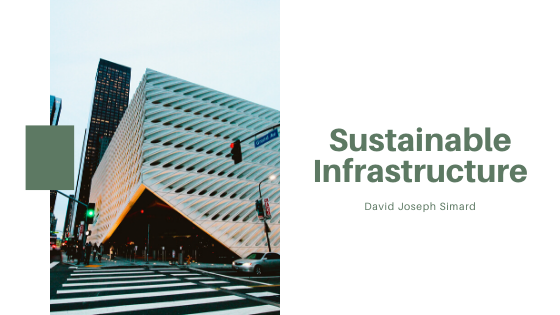The term infrastructure is often used to describe how society can expand its manufacturing, services, and trade. Bridges, power plants, water supplies, and treatment facilities are all part of an area’s infrastructure, but it is no longer enough to profit economically from these projects. There is an increasing need for greener initiatives to protect the welfare of the planet as well. That’s where sustainable infrastructure comes into play. By overlapping the elements of the environmental, economic, and social needs of a community, you achieve sustainability.
In addition to enabling economic development, commerce, and the creation of jobs, sustainable infrastructure also enhances the quality of life for the population by taking care of Mother Earth because natural resources are protected instead of being stripped away. A reduction in the use of materials, less pollution, fewer carbon emissions, and improved labor and community relations will also be a financial and economic boost for those who embrace it. Coupled with smart technology, the smart, green buildings of tomorrow will focus on green energy, water reclamation, and sustainable, durable building materials and construction methodologies. Attention is geared towards an area’s financial, social, and political issues, as well as a sensitivity to environmental and economic concerns.
The most widely used rating system for green building is called Leadership in Energy and Environmental Design (LEED). They are regarded as the globally recognized standard when it comes to sustainable infrastructure ratings. This third-party certification program’s primary focus is new commercial-based construction projects and neighborhoods, but it is available for any building type. The focus on the urban landscape is because more than half of the world’s population is expected to live in urban areas by the year 2050. LEED scores each project based on a points system. The more points you obtain, the higher your rating.
LEED raises the bar and rigor of what constitutes a sustainable performance green project. The rating system has four certification levels that attest to a building or neighborhood’s quantity of robust, high-performance green features, beginning with Certified, followed by Silver, Gold, and Platinum.
The critical elements of sustainable infrastructure take several factors into account. With a residential property, for example, the residents would ideally have access to public transportation, which cuts down on pollution and congestion while making it easier for them to maintain gainful employment. Also, solar and geothermal initiatives will hopefully one day become the new normal when it comes to future construction. Whether a project is new or existing hospitality, retail, office, industrial or institutional, LEED provides the guidance and launching points for a markedly improved building that will cost less than a comparative typical, lesser-performing building to maintain and operate.


